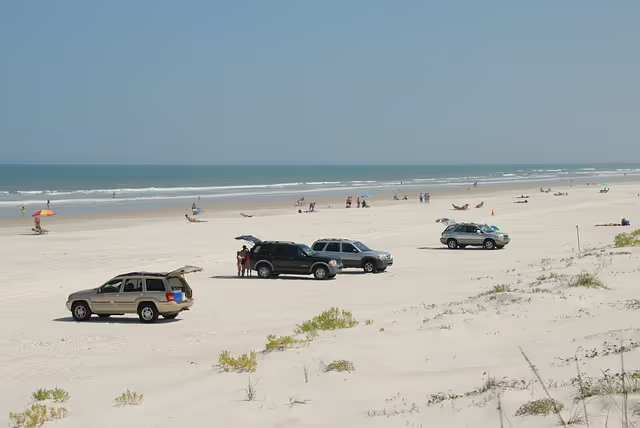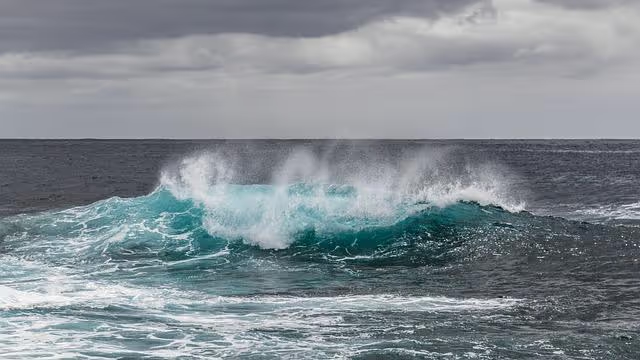Rules of the Beach: Staying Safe on Our Beautiful Stretches of Sand



When you go to the beach, you want to have a good time. Here in our Ocean Shores, our beaches are the perfect place to have some fun. Whether you want to go for a swim in the ocean, build a sandcastle, admire the sunset, or look for beach treasures, there is no shortage of ways to have a great day. Now that summer has arrived, we believe that this would be a good time to go over some of the guidelines that are in place on our beaches to keep you and your fellow beachgoers safe and happy.
Driving on the Beach

When you arrive at the beach, you may find yourself tempted to drive onto it. However, the City of Ocean Shores does not recommend doing so, especially if you've never done it before (1). Vehicle parking is available at or near all of Ocean Shores' beach access points. Should you choose to drive onto the beach, you are doing so at your own risk.
The standard rules of the road, such as being properly licensed and insured, not being under the influence of intoxicants, and not driving recklessly, apply on the beach. Additionally, there are some beach specific rules (1) that drivers need to follow, such as not driving in the sand dunes, staying on hard-packed sand, and being aware of tides (up to date tide charts for Ocean Shores can be found here) and debris. Drivers will also need to be on the lookout for pedestrians, pets, and wildlife. Furthermore, between April 15th and Labor Day each year, the section of beach between Chance A La Mer and Pacific Ave and the section between Marine View Drive and the North Jetty is closed to all vehicles. ATVs are not allowed on any section of the beach or the beach approaches. The speed limit is 25mph.
Campfires
Having a campfire can be a fun part of going to the beach, especially here in Ocean Shores where the weather is generally cool and the water is often colder. However, as anyone who fights fires can tell you, it doesn't take much for a fire to get out of control. To ensure your campfire is a safe one, the City (1) has imposed the following guidelines:
The Ocean

The ocean is a sight to behold, with its many waves and treasures. Playing in the ocean is something that many beachgoers like to do, and we can't blame them. However, the ocean can also be a risky place, especially in stormy weather. During the summer months, we don't usually see much in the way of stormy weather here in Ocean Shores. In the fall and winter, that is a very different story. Before entering the ocean, check to see if any advisories or warnings have been posted. If it is being advised that you stay out of the ocean, stay out. If such advice is not being given, then you should judge the conditions for yourself and make your own determination about whether or not you wish to enter. One factor that you should take into account when making your determination is that there are no lifeguards on our beaches. Should you run into trouble and need help, it might not be as immediately available as it would be on a lifeguard staffed beach. The City strongly recommends wearing a life jacket when playing near the water's edge (1).
Another concern with regards to the ocean are rip currents. While all ocean currents are strong and potentially dangerous, rip currents are notoriously the worst. They are fast-moving, narrow channels of water that begin near the beach and extend offshore through the line of waves that are breaking (3). For complete information on what to do should you get caught in a rip current, we recommend watching this Rip Current Survival Guide from NOAA.
A third concern regarding the ocean are Sneaker Waves. Sneaker Waves are especially strong waves that come up far onto the beach without warning. It is strongly advised that you not turn your back on the waves (1). If you do, you won't necessarily see the wave coming and be able to react in time.
Sand Dunes and Jetties
The beaches of Ocean Shores are well known for their sand dunes and jetties. They are fun places to explore, and we would encourage you to check them out on your next trip to the beach. Here are some guidelines and advice (1) for visiting these places:
Interacting with Wildlife

It is no secret that Ocean Shores is home to a large array of wildlife. Our beaches and the ocean are home to many of our city's most unique creatures and spotting them can be part of a fun day at the beach. However, in order for wildlife to want to live on our beaches and in the waters off our shores, it is important to give them the respect and protection that they deserve and, in some cases, have been given under the law. Here are a few guidelines (1) to follow to help ensure this respect and protection is granted.
Dressing for the Weather
The beaches of Ocean Shores are not like those of Southern California and Hawaii. They are not warm and sunny all the time. Cool and cloudy is quite often the name of the game here. Even in the middle of the summer, you are probably going to want bring a sweatshirt or long sleeve shirt with you to the beach. Our average daytime summer temperatures are only around 64-65 degrees and nighttime temperatures typically hover around 53-55 degrees (2). If you plan to go into the ocean and do more than just take a dip in the surf, a full body wetsuit is advisable. Our average water temperatures only range from the mid-40s to the mid-60s, which are cold enough to cause hypothermia (1).
Conclusion
Unfortunately, there are more guidelines than we could cover in one post. For more information about staying safe on our beaches and the rules that are in place, please visit the websites for the City of Ocean Shores and Washington State Parks. You should also check the bulletin boards at the beach access points for the most current information.
We hope that these guidelines will help ensure that your next trip to the beach is a safe and enjoyable one. Enjoy your beach day!
References
© Ian D. Caldwell, July 2022
Touch whale bones, examine shipwreck artifacts and connect with the coast's living history.

Support our mission, get involved in educational programs, or contribute through donations and volunteering.